Recent Articles
Popular Makes
Body Types
2018 Mazda CX-3 vs. 2018 Subaru Crosstrek: Which Is For You?
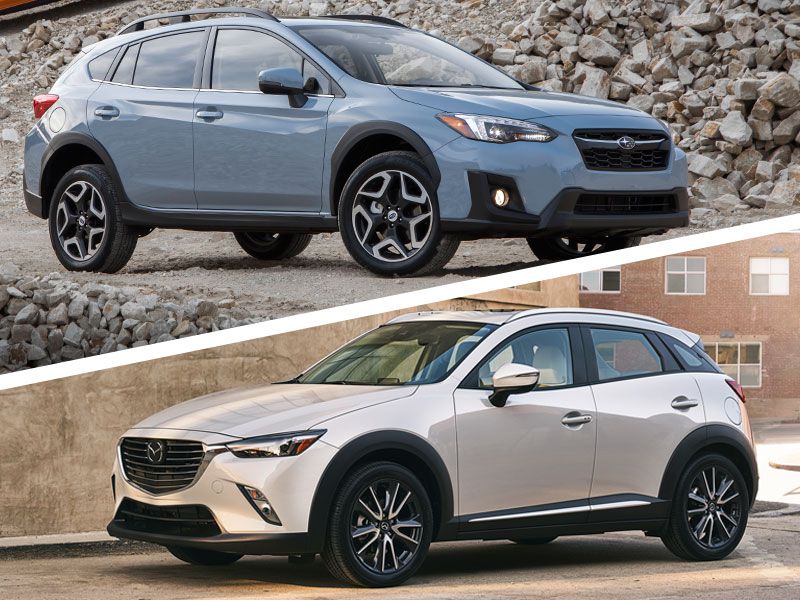
2018 Subaru Crosstrek vs 2018 Mazda CX 3 ・ Photo by Subaru / Mazda
Subcompact crossovers represent one of the hottest market segments right now, and for good reason: Taking over where hatchbacks and wagons served in earlier generations, they deliver car-like rides, comfort, and fuel-efficiency along with the stance, convenience, and space of an SUV. Two of the best subcompact CUVs currently produced are the 2018 Mazda CX-3 and 2018 Subaru Crosstrek.
The CX-3 is in its first generation, having first been produced as a 2016 model (a 2019 refresh is on the way). Riding on the same platform as the Mazda2 that's no longer sold in the U.S., the CX-3 has been a moderate success for Mazda, with 16,355 sold in 2017. The Crosstrek has been around a little longer, having debuted as the 2013 XV Crosstrek. The second generation debuted in 2018. The Crosstrek had its best sales ever in 2017, moving 110,138 examples during the year.
Which brings us to the question of the day: 2018 Mazda CX-3 vs. 2018 Subaru Crosstrek: Which is for you?
Design
The CX-3 and Crosstrek are a study in contrasts in a lot of ways. While Mazda’s designers strove to create an elegant, appealing boulevardier of a crossover, Subaru’s designers were drawing up a rugged little cute ute. Riding on a 101.2-inch wheelbase, CX-3 has a total length of 168.3 inches, while the Crosstrek is significantly larger and longer with a 104.9-inch wheelbase and a total length of 175.8 inches. The CX-3 gives up nearly 3 inches to Crosstrek in terms of height (60.7 inches vs 63.6 inches), but only about an inch of width (69.1 inches vs. 71.0 inches).
The tale of the tape doesn’t really reveal how different these two vehicles look in real life. The CX-3 is a strikingly attractive swoopy hatchback, while the Crosstrek is chunky, slightly cartoonish toy. It’s West Highland Terrier vs. Pembroke Welsh Corgi. Both cute, but completely different.
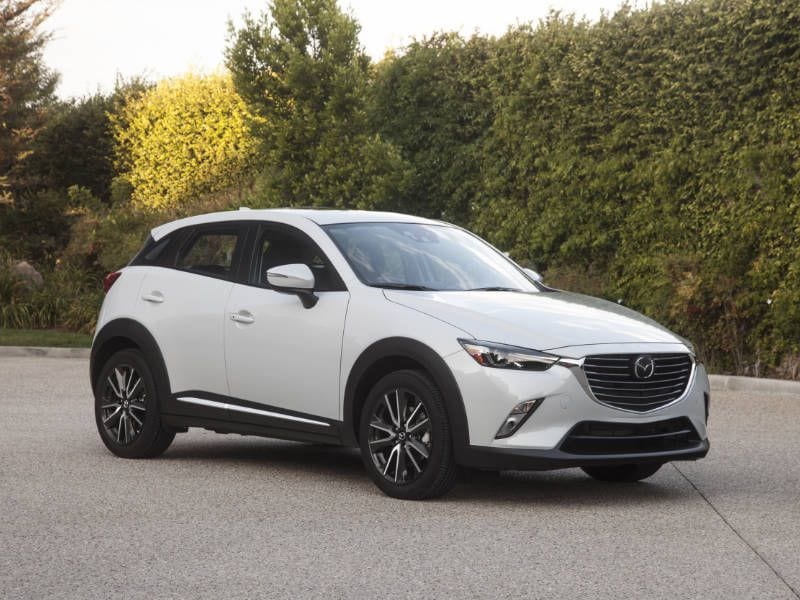
Photo by Mazda
Engine
Both the CX-3 and Crosstrek use a single engine choice across trim variants, and neither offers a turbocharged option. The CX-3 comes with a 2.0-liter inline four-cylinder engine with double overhead cams, four valves per cylinder, and advanced direct gasoline injection, capable of producing 146 horsepower and 146 lb-ft of torque. The Crosstrek’s 2.0-liter four-cylinder engine is a horizontally opposed Boxer with double overhead cams, four valves per cylinder, and direct gasoline injection. It can put out up to 152 hp and 145 lb-ft of torque.
The front-wheel drive CX-3 is rated for 29 mpg in the city and 34 mpg on the highway and 27 mpg city/32 mpg highway with all-wheel drive. The AWD-only Crosstrek is rated for 23 mpg city/29 mpg highway with a manual transmission and 27 mpg city/33 mpg highway with an automatic.
Tie.
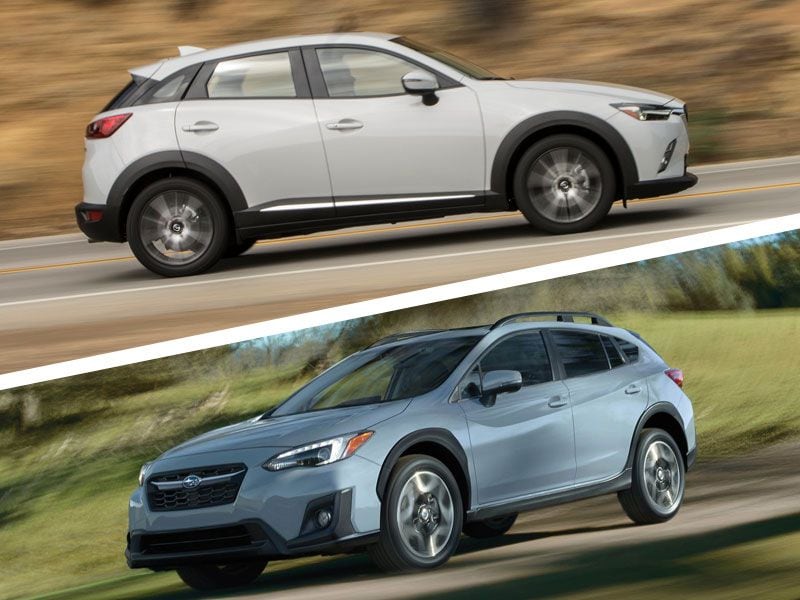
Photo by Subaru / Mazda
Transmission
Transmission engineering is one area where there are some very clear differences between CX-3 and Crosstrek. The CX-3 comes with a traditional six-speed automatic transmission with manual-shift mode. Its fifth and sixth gears are overdrive, lowering engine rpm for highway efficiency. The Crosstrek comes with a standard six-speed manual transmission or an optional $1,000 Lineartronic continuously variable automatic transmission (CVT). In Premium and Limited trims, the CVT comes with steering-wheel-mounted paddle shifters for a simulated seven-speed shift pattern.
While enthusiasts love manual transmissions, the vast majority of drivers prefer and choose automatic transmission setups. As slick as the Subaru CVT is, it is still not as responsive or direct as the Mazda automatic.
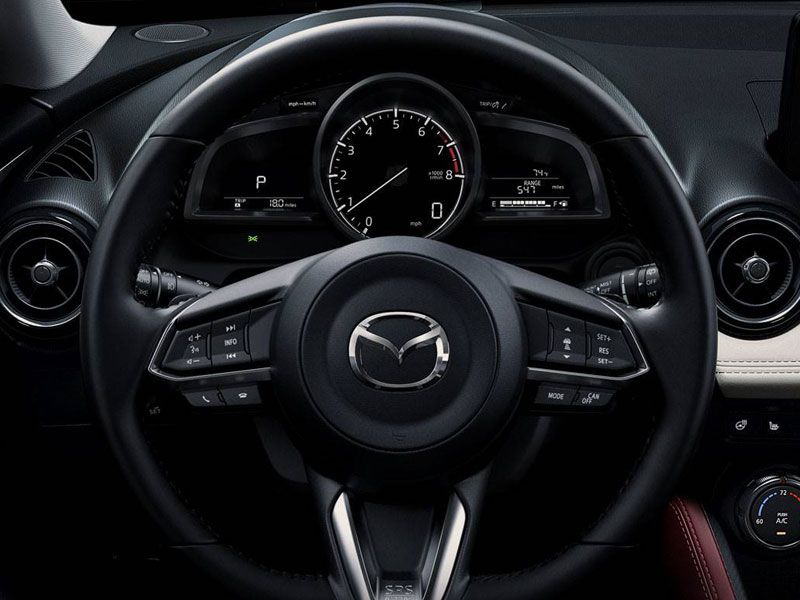
Photo by Mazda
Comfort/Amenities
Both the CX-3 and Crosstrek arrive with the expected amenities, like power windows and door locks, keyless entry and push-button start. Step up the trim ladder and you get features like power heated front seats, leather seating surfaces and trim, and other premium amenities.
The CX-3 benefits from a more elegant design and nicer materials and surfaces, especially in the upper trim levels. The Crosstrek’s more generous dimensions translate into more passenger space — especially when it comes to rear hip and shoulder room. The difference in passenger volume (87.6 cubic feet maximum for the CX-3 vs. 100.9 cubic feet maximum in Crosstrek) can be felt everywhere, as the Crosstrek feels airier and less cramped than the CX-3.
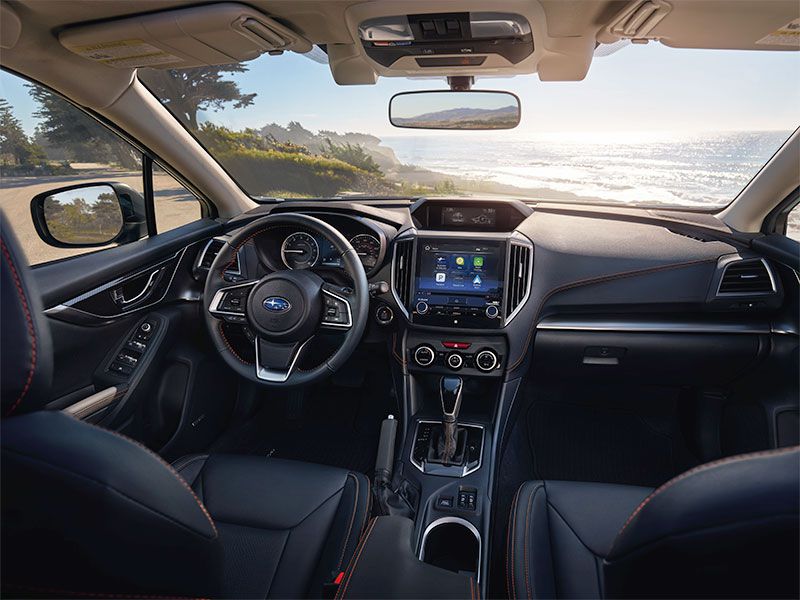
Photo by Subaru
Cargo
The tale of the tape is pretty definitive when it comes to cargo space. The CX-3 can accommodate just 12.4 cubic feet of luggage behind its rear seat. Choose the premium Bose sound system, and the subwoofer eats up some of that space, leaving just 10.1 cubic feet of space up to the tonneau cover. With the second row folded, the CX-3 can swallow up to 44.5 cubic feet of cargo.
In contrast, the Crosstrek has a 20.8-cubic-foot capacity behind its rear seat, and it can hold up to 55.3 cubic feet behind its front seats. However, the CX-3’s load floor height is 23.2 inches, while you’ll have to lift cargo higher (30.9 inches) to get it in the back of a Crosstrek.
Subaru Crosstrek.
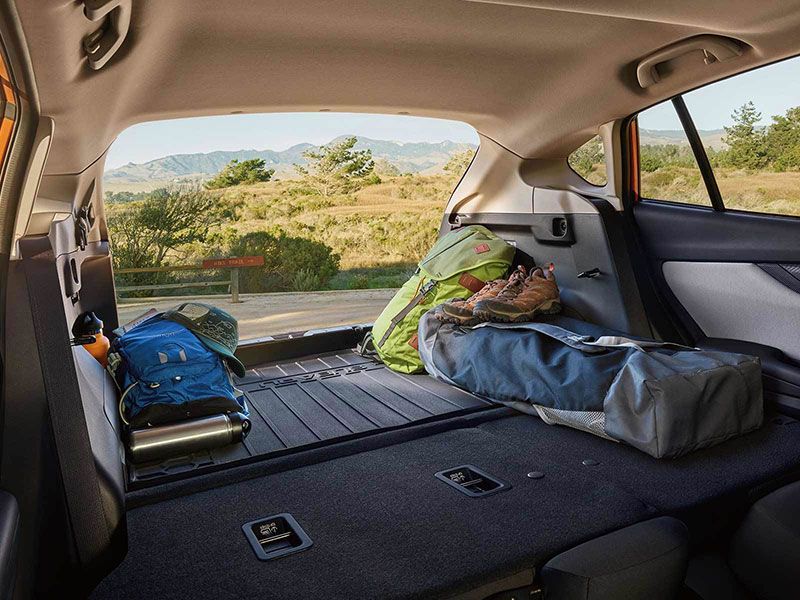
Photo by Subaru
Infotainment/Technology
Both the CX-3 and Crosstrek come with standard color touchscreen interfaces at the top of their center stacks, each with a standard rearview camera. The CX-3’s is a 7.0-inch unit, while Crosstrek’s is 6.5 inches. Bluetooth connectivity and audio streaming is standard on both, with wired Apple CarPlay and Android Auto standard on Crosstrek but not available on CX-3.
Step up to the Crosstrek's Limited trim or add an options package to get an 8.0-inch touchscreen, and you can upgrade it further with navigation and an eight-speaker Harman Kardon speaker system with a subwoofer and 440-watt Harman Kardon amplifier – the Crosstrek's first premium audio system. The CX-3 can be ordered with a premium Bose audio system, and navigation can be added to any trim level.
Tie.
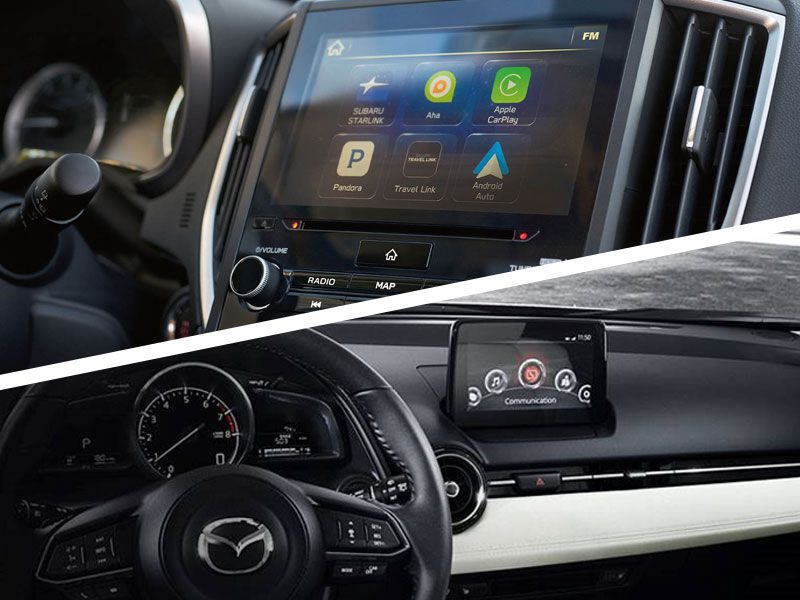
Photo by Subaru / Mazda
Safety
Both the CX-3 and Crosstrek received Top Safety Pick ratings from the Insurance Institute for Highway Safety and five-star overall safety ratings from the National Highway Traffic Safety Administration.
Both are available with a similarly impressive suite of safety features. However, the Mazda offers low-speed automatic emergency braking as a standard feature, while it's an extra-cost option on the Crosstrek. And the Subaru is available with reverse automatic braking that's not offered on the CX-3.
Tie.
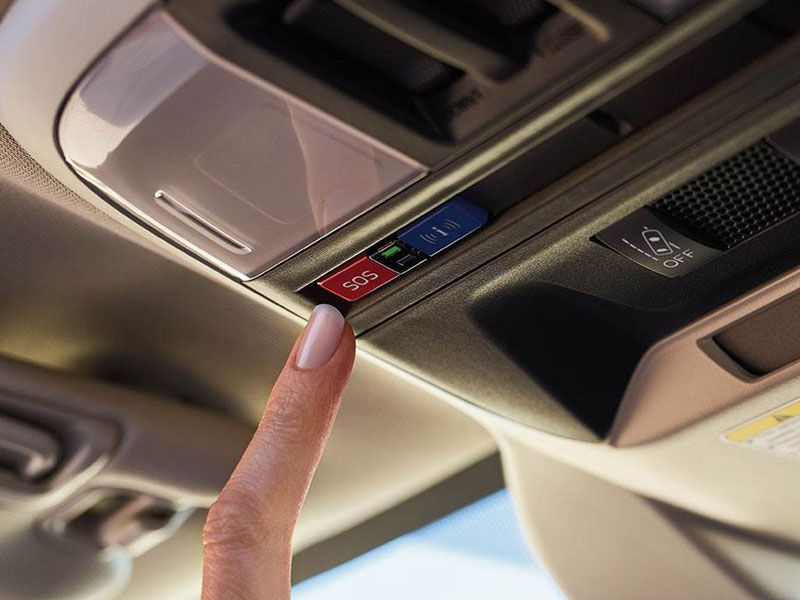
Photo by Subaru
Driving Experience
The CX-3 comes with standard front-wheel drive and available all-wheel drive. In each configuration, the CX-3 is a fun-to-drive vehicle thanks to balanced handling and just-right transmission tuning. While 145 hp is not a lot of power, Mazda has learned to make a virtue of light weight, nimble handling, and precise steering — just look at the MX-5 Miata for the prime example. The CX-3 is no Miata, but it does have enough of the “Zoom-Zoom” character to keep things interesting.
The Crosstrek is no dog, but it pays a price for its extra inches and a couple of hundred extra pounds. It can’t deliver the zoomy cornering that Mazda specializes in, and its CVT lacks the lively behavior of the CX-3’s traditional automatic. The Crosstrek’s manual transmission can make the experience more emotional, but you’ll have to search far and wide for a vehicle so equipped. If you find yourself off-road, the equation flips thanks to Crosstrek’s superior ground clearance(8.7 inches vs. 6.1 inches) and X-Mode setting.
Mazda CX-3.
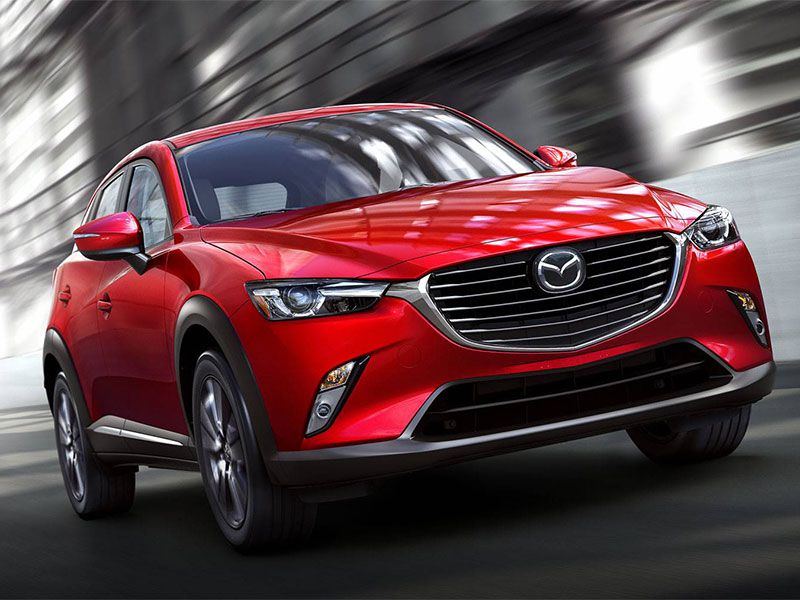
Photo by Mazda
Pricing
The 2018 Mazda CX-3 Sport starts at $20,110. The Touring trim starts at $22,195, and the Grand Touring starts at $25,165. Add $1,250 to upgrade from front-wheel drive to available all-wheel drive ($21,360, $23,445, and $26,415 respectively).
The 2018 Subaru Crosstrek 2.0i starts at $21,795 with a six-speed manual transmission and $22,795 with a CVT. The 2.0i Premium with a six-speed manual starts at $22,595, or $23,595 with a CVT. The 2.0i Limited is only available with a CVT, starting at $26,295. Destination and delivery for the Crosstrek is $915 compared to $940 for the CX-3. Options and packages pile on top of the starting prices.
Mazda CX-3.
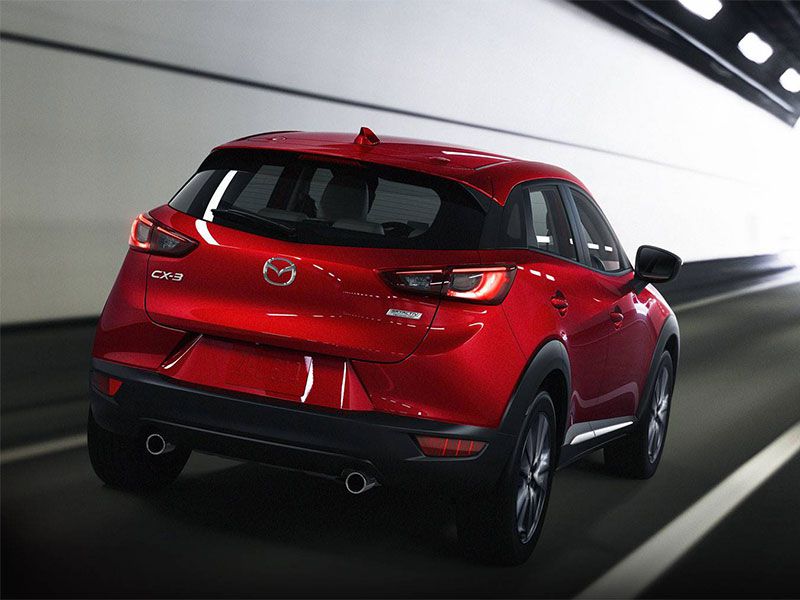
Photo by Mazda
Recommendations
Both the 2018 Mazda CX-3 and 2018 Subaru Crosstrek have a lot to recommend in them. They each take on the subcompact crossover equation with a different point of view, leaving the choice between them to be a matter of taste and need. For some buyers, the elegant CX-3 will be just the ticket for commuting, zipping around the city, and transporting a small family. It delivers a lot of style, panache, and fun for the money. For others, the additional elbow room, cargo space, and adventure capability of the Crosstrek will fit the bill. Each vehicle is reasonably priced, fuel efficient, safe, and well-built. Shoppers would be well-served to explore other options, too, as this market segment is constantly expanding. Don’t overlook the Honda HR-V, Ford EcoSport, Buick Encore, Nissan Kicks, Kia Soul and others.
Ultimately, we will give the slight edge to the 2018 Mazda CX-3 for its superior day-to-day driving experience and narrow price advantage.
Mazda CX-3.
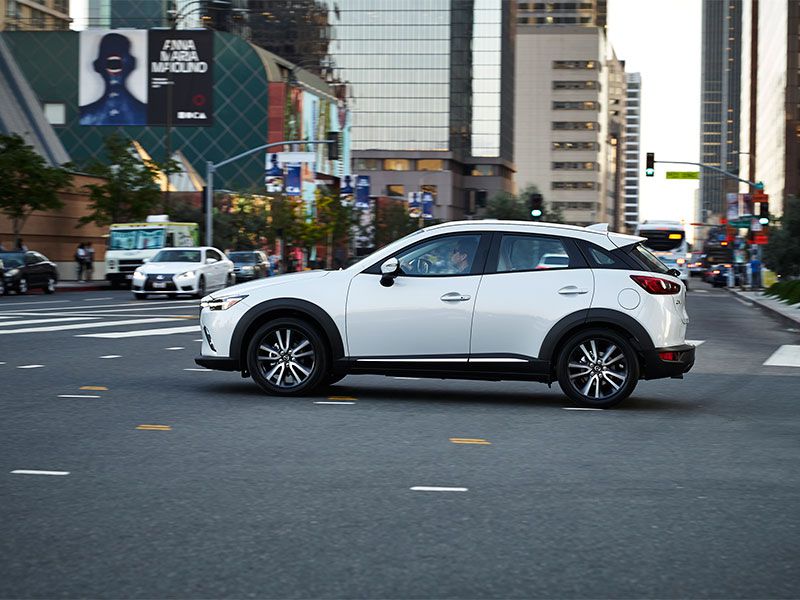
Photo by Mazda